This year, more than ever, we all need to keep an eye on our heating. We want to make sure we know what we’re spending and that we’re not wasting any heat. A smart thermostat can help you do that.
With so many brands on offer, it’s not easy to decide which one will suit you best. If you’re considering buying but you’re not sure which one to go for, read on.
Different systems have different features but all will allow you check the temperature at a glance and set schedules to make your home more comfortable and cut down on wasting heat when you’re out.
What’s more, the easy scheduling means that you can always count on coming home to a cosy house or waking up in a warm bedroom – and that itself can make an investment worth it during the colder months.
Beyond that, there are more advanced features including geo-location, which can automatically turn off your heat when the last person leaves, and open window detection to make sure you’re only ever heating your house – not accidentally warming up the garden.
If you use all the energy efficiency features, you might even save on your bills. However, savings won’t be instant as you’ll need to factor in the cost of the system and installation. To find out if smart heating is likely to save you money, we’ve got a dedicated article you might want to check out.
There’s also a huge amount of variation in tech and pricing, which can make it difficult to figure out what you’re getting for your money and what a good deal looks like.
We’ve tested most of the smart systems in the UK market and we’ve done our best to break down how each works, what features they have, how they’re installed and what might make them worth your money.
If you’ve got an Ideal Boilers brand boiler from mid-2019 on, have a look at our article on the Halo Combi, which is specifically designed to be an Ideal-compatible smart heating system.
Otherwise, read on for the best smart thermostats we’ve tested. And, if you’d like in-depth buying advice, scroll past the chart for more information.
Best smart heating system reviews
Hive Active Heating 2 – Best design
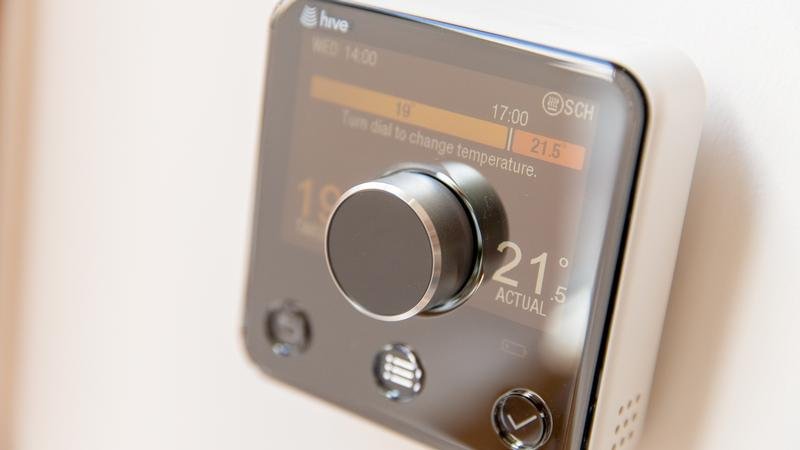
- Pros
- Easy to use interface
- Beautiful design
- Part of Hive ecosystem
- Cons
- Professional installation recommended
The Hive Active Heating system is a great upgrade for anyone who wants or needs to be able to control their heating remotely. The addition of multi-zone support is also good, and the ability to boost heating and hot water is a brilliant feature.
This second iteration of Hive is a giant leap forward from the solid (but somewhat dull) first-generation product. The interfaces of both the app and thermostat are intuitive and quick to use. There are clearly energy savings which Hive can help you make and you can quickly recoup your expenditure if you’re conservative with your temperatures and schedule. And it’s easy to add the Hive Active Light, as well as smart plugs and switches.
Read our full Hive Active Heating 2 review
Honeywell Evohome – Most comprehensive system
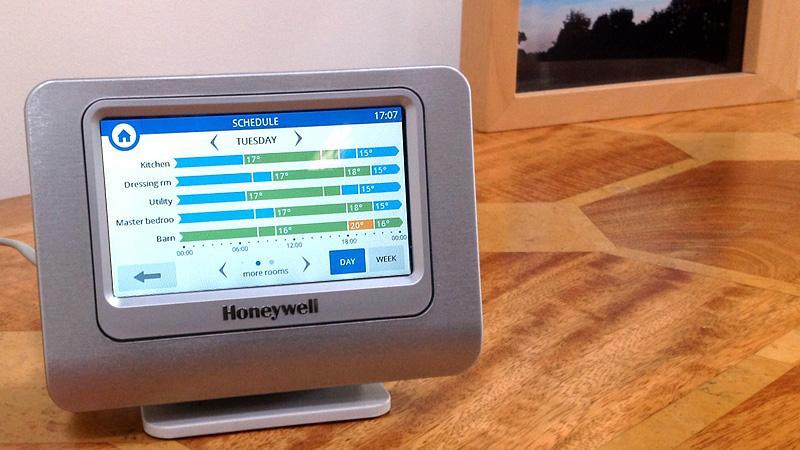
- Pros
- Comprehensive
- Easy to use
- Convenient
- Cons
Despite the cost, EvoHome is a fantastic system for those who want to control temperatures in different rooms, have control over their hot water and also those with underfloor heating. It’s particularly good for larger homes with few occupants where you might want to heat only certain rooms at certain times.
It’s very easy to use, even for technophobes and although it can take a while to set a schedule in the first place, making tweaks is quick and simple.
If money is no object, we can highly recommend Evohome. For virtually everyone else, a Hive or Nest with dumb TRVs is a more affordable option.
Read our full Honeywell Evohome review
Nest Learning Thermostat (3rd Generation) – Simplest to use
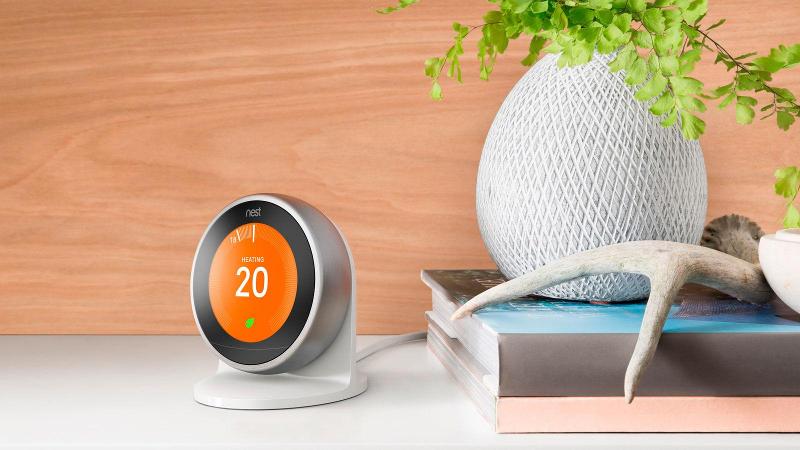
- Pros
- Well designed
- Can control your hot water
- Cons
- Works best in smaller homes
Being reliable, well-designed and easy to use, the Nest thermostat is a great choice. It doesn’t have the array of accessories and compatibility of systems that some systems do, but you can buy separate smart TRVs to control radiators without changing your plumbing.
The Nest Protect smoke and carbon monoxide alarm also works with the thermostat, as does the Nest Cam camera. The 3rd generation can also control your hot water, making it even better, and the latest app update means your phone can tell it when you’ve gone out, so you don’t waste money heating an empty home.
Read our full Nest Learning Thermostat (3rd Generation) review
Genius – Full smart home capability
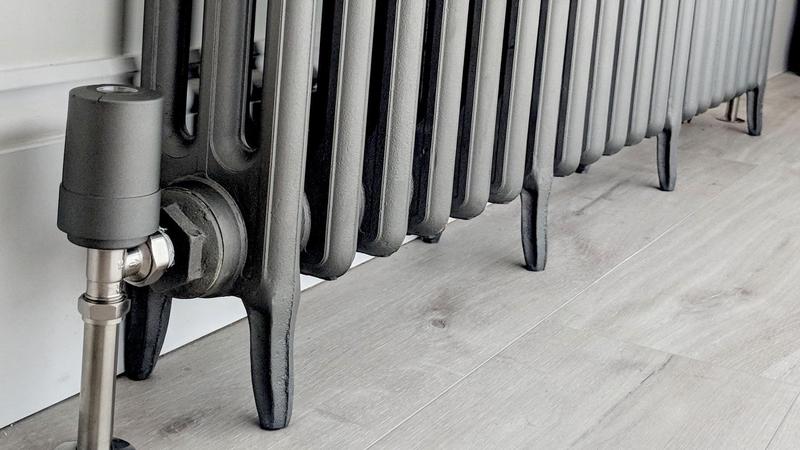
- Pros
- Good for larger homes and businesses
- Gives complete heating control
- Cons
- More expensive than rivals
Genius is easy to use and efficient, and over time it may even save you the cost of installation. And it’s fairly priced, although far from cheap. How long Genius takes to pay for itself will depend on your circumstances, and it may be that dropping £800 to £1,200 or more is too much of a long-term investment.
But it is a great product, and if you are looking to install a zoned smart heating system, we are happy to recommend Genius – not least because of its potential as a true smart home network for your house.
Read our full Genius review
Tado Smart Thermostat Starter Kit V3+ – Best for use with location services
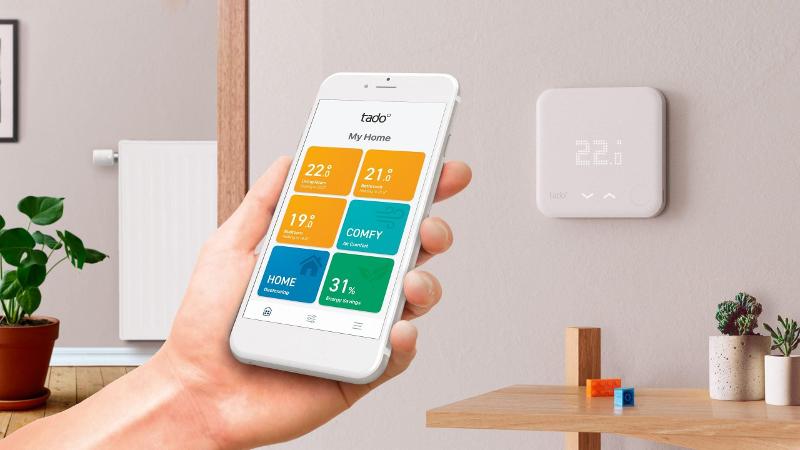
- Pros
- Complete automation
- Prevents wasted heat
- Cons
- Installation recommended
- Subscription required
Determining a house’s temperature depending on who’s at home makes a lot of sense. In this arena, Tado is the best smart thermostat as its presence detection simply follows you and your smartphone via GPS and other location factors. However, those features are now locked behind a paid subscription.
Being able to control the temperature (wherever you are) via an app on your phone is an ideal way to control your heating and energy costs. New inside and outside Air Comfort reports and Open Window Detection features, plus the ability to control multiple zones via smart radiator valves, improve on the central idea.
Tado isn’t cheap, but you may start saving on your heating bills, even with the subscription fee.
Read our full Tado Smart Thermostat Starter Kit V3+ review
Drayton Wiser Multizone – Best priced multi-zone system
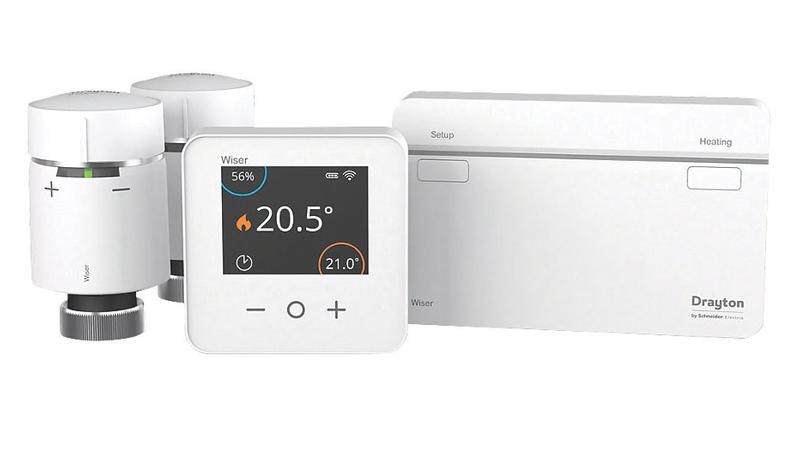
- Pros
- Easy installation
- Reasonably priced
- Multi-room
- Cons
- Weak signal from control box may require a booster
Wiser is easy to install and easy to use. You could get it set up in half an hour and it won’t require you to call out an engineer. It doesn’t have lots of advanced features but it is much cheaper than some of its rivals.
What it does do well is allow you to control the temperature separately in different rooms, via smart radiator valves, which are also easy to fit.
The app is great, too, and several features have been added since launch, showing that it’s still being developed.
Read our full Drayton Wiser Multi-Zone review
Nest Thermostat E – Most stylish
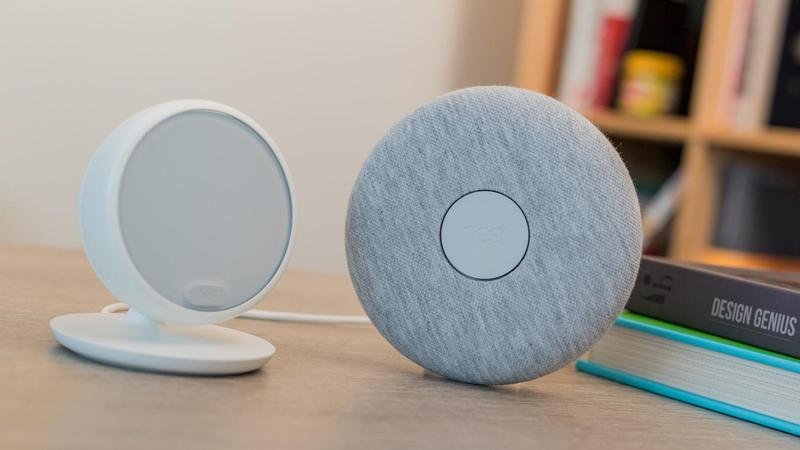
- Pros
- Easy to install
- Good value for US buyers
- Cons
- Limited features compared to Nest 3rd Gen
The Nest E is a great smart thermostat that’s comfortably among the most stylish and easy to use on the market, but as it stands in the UK, there’s not much reason to opt for the E over the existing 3rd Generation Nest, which has some extra functionality for a similar price – excluding the potential cost of a professional installation.
It’s a different story in the US though – a bigger price gap makes the E an easy recommendation if you’re in the States, it offers all of the most important features of the third-generation Nest, together with design improvements, for a significantly lower price.
Read our full Nest Thermostat E review
Netatmo Smart Thermostat – E-ink display
- Pros
- Sophisticated temperature setting and scheduling
- Cons
- Limited functionality
- Most changes need to be made via the app
Netatmo’s thermostat is relatively basic, lacking any kind of presence detection, but it works well and is one of the cheaper options. It takes into account your home’s insulation quality as well as the outside temperature when setting the temperature.
Netatmo lets you set a different schedule for every day of the week or create different schedules and switch between them, so you could have weekday and weekend heating schedules to fit your routine.
Bear in mind that the display lets you adjust temperature and nothing else, so you’ll need a compatible phone or tablet to get the most from the system.
Read our full Netatmo Smart Thermostat review
Netatmo Modulating Thermostat – supports OpenTherm boilers
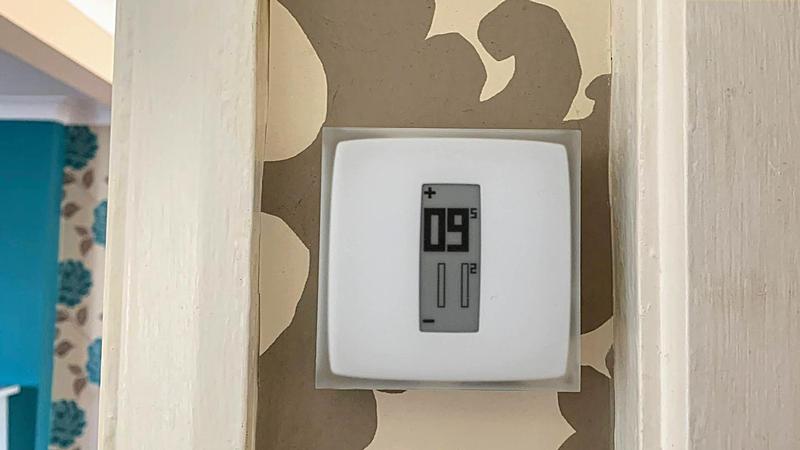
- Pros
- Auto-care helps you troubleshoot boiler issues
- Cons
Netatmo’s latest smart thermostat supports OpenTherm boilers – boilers that can precisely adjust the temperature of a home’s heating by changing the burner power.
It’s an energy efficient way of operating, which means it’ll save you money in the long run, although you’ll also need a set-up with an outside temperature sensor.
The modulating thermostat also has Auto-care, which gives you detailed information when something goes wrong with the boiler, as well as limited hot water control.
However, it’s expensive and you can get the same feature set – or better – for less from a competitor.
Read our full Netatmo Smart Modulating Thermostat review
Devolo Home Control Radiator Thermostat – Best budget option
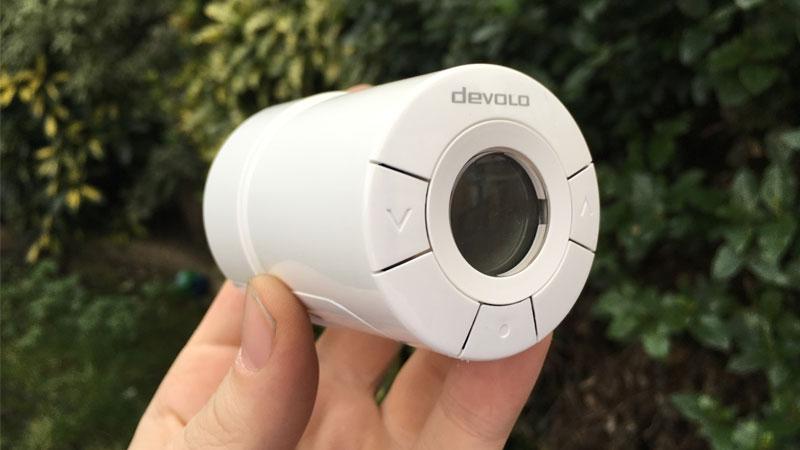
- Pros
- Budget-friendly
- Easy to install
- Cons
- App experience is limited
Even though it was designed with the whole home in mind, the heating accessories make Devolo a great smart heating system. Unlike Nest and Hive, you don’t need an engineer to install it – in fact, it only took us minutes to do it ourselves. However, to control the boiler you’ll need the smart thermostat as well.
The app experience lets it down a bit, but the full website more than makes up for those frustrations. Devolo’s additional accessories can turn a dumb home smart, and it can be a gradual process as all accessories are sold separately.
Read our full Devolo Home Control Radiator Thermostat review
Guide to buying smart home heating
The best smart heating system for you depends on the type of home you have, how you use it and how much money you can outlay to make longer-term savings.
There’s a way of making every house more efficient, comfortable and wasting less heat. But the best method for each house will differ.
The key question is the level to which you need – or want – to make your heating smart.
Most of these systems – Hive, Nest and Netatmo – simply put a smart thermostat into the most-used room in the house or the hallway, and moderate the temperature of the whole house to match that room. For smaller houses, in which most rooms are in regular use, this is probably a cost-effective way of attaining the results you want. You can always turn off the radiators you don’t need to avoid heating rooms unnecessarily.
These thermostats also make it easier to set schedules and many have additional ‘smart’ features to make your heating more efficient and save you money. For example, some can detect when no one’s home and automatically turn off the heating, or do the same if a window is left ajar.
Honeywell Evohome, Tado, and Genius offer something better. One of the ways they do this is by replacing the valves on your radiators with ‘smart’ valves, although depending on which package you get, you may have to buy these separately.
They allow you to divide up your home into various zones and then offer smart heating in each zone, so your guest bedroom is heated only when required, the master bedroom is warm in the morning and at bedtime, and the kitchen is cosy at breakfast and tea time.
In the UK at least, all modern houses with living space covering ground greater than 150m2 have to be built with at least two zones of heating, according to 2013 Building Regulations Part L.
Tado can be smart-radiator based or a combination of room thermostat and zonal control via its Smart Radiator Thermostats. These smart TRVs can often be used independently of the thermostat so you don’t necessarily need to buy the same brand and you can still use them with Nest, which doesn’t currently offer the valves. The only issue is that you’ll need two separate apps to control your heating.
Smart TRVs are also a great option for people in rented accommodation, as they don’t require permanent installation.
Honeywell, Genius and certain others can control more sophisticated heating systems…
